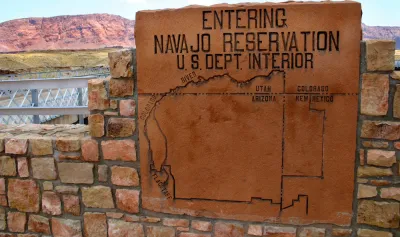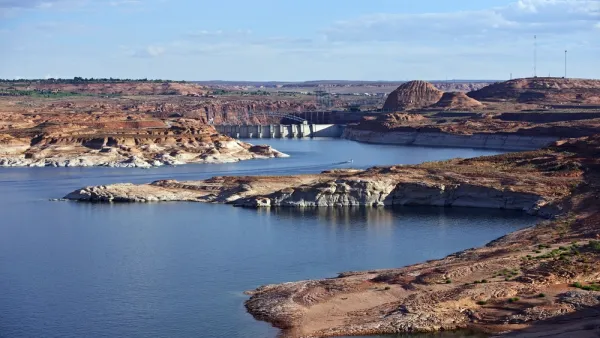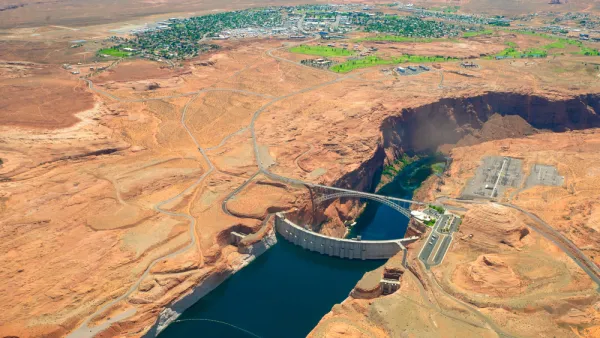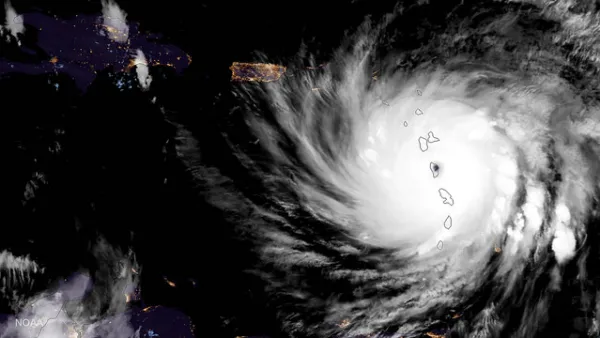On May 24, the Navajo Nation had 4,658 reported cases and 165 deaths in a population of 173,000—more even than New York City—while local organizers scrambled to find the water to cover the need during the pandemic.

Heather Hansman reports on the pre-existing public health crisis that has exacerbated the Covid-19 pandemic on Navajo lands that spans the Four Corners region of the Southwest United States, where the Navajo Nation is experiencing the highest rates of infection in the country.
Hansmen ties access to water in the Navajo Nation to the tragic outcomes of the COVID-19 public health crisis, and a long-standing history of neglect:
The Navajo Nation is particularly vulnerable to the coronavirus because it lacks sufficient resources and infrastructure that most of the U.S. takes for granted: roads, electricity, internet to help spread public-health information, and hospitals. The crisis has been exacerbated by tight living quarters, and there are high rates of health issues, like asthma, cancer, and cardiovascular disease, among residents. All of those problems are tied on some level to federal neglect or exclusion from resources and stalled or missing funding. Most recently, $600 million in COVID-19 relief aid was delayed by more than a month; the money finally arrived in early May.
Hansen details that history of neglect for the water infrastructure of the Navajo Nation from the U.S. Constitution through the 1908 Winters Doctrine to the Colorado River Compact to the 1920s and finally to the CARES Act of 2020, but the water supply crisis facing the Navajo Nation is not isolated to the Four Corners region. According to Hansmen, "there are currently 574 federally recognized tribes in the U.S., and as of 2019, only 40 of them have reached water-rights settlements with the government."
Cindy Howe, the primary source in the article and a project manager for the Navajo Water Project, offers several prescriptions for the crisis: additional central water collection locations, bigger storage tanks, and universal access to running water.
FULL STORY: How a Lack of Water Fueled COVID-19 in Navajo Nation

Analysis: Cybertruck Fatality Rate Far Exceeds That of Ford Pinto
The Tesla Cybertruck was recalled seven times last year.

National Parks Layoffs Will Cause Communities to Lose Billions
Thousands of essential park workers were laid off this week, just before the busy spring break season.

Retro-silient?: America’s First “Eco-burb,” The Woodlands Turns 50
A master-planned community north of Houston offers lessons on green infrastructure and resilient design, but falls short of its founder’s lofty affordability and walkability goals.

Test News Post 1
This is a summary

Analysis: Cybertruck Fatality Rate Far Exceeds That of Ford Pinto
The Tesla Cybertruck was recalled seven times last year.

Test News Headline 46
Test for the image on the front page.
Urban Design for Planners 1: Software Tools
This six-course series explores essential urban design concepts using open source software and equips planners with the tools they need to participate fully in the urban design process.
Planning for Universal Design
Learn the tools for implementing Universal Design in planning regulations.
EMC Planning Group, Inc.
Planetizen
Planetizen
Mpact (formerly Rail~Volution)
Great Falls Development Authority, Inc.
HUDs Office of Policy Development and Research
NYU Wagner Graduate School of Public Service




























